We are grateful to George, and his mum Louise, who worked with us in February 2022 to share his story here. Sadly, he passed away in April 2022. We remember George as we continue our work to raise awareness of this devastating disease and to fund research to help find a cure. He will be forever in our hearts.
When George, then aged 12, began having headaches, soon also accompanied at times with vomiting, alarm bells rang for his parents. They suspected he might have a brain tumour, but their fears were brushed aside and his symptoms put down to migraine. However, the couple persisted with getting a diagnosis and three weeks after he first became ill their worst fears were confirmed. Devastingly, biopsy results following surgery revealed George’s brain tumour was an aggressive glioblastoma multiforme (GBM).
Here is George’s story as told by his mother Louise …
George is our bright, inquisitive, middle child of three; the adoring younger brother of Jamie, 17, and proud, protective big brother of Isabella (known as Issy) who is just 19 months younger than him. He’s a really kind and mature boy with an ability to empathise way beyond the average 13-year-old.
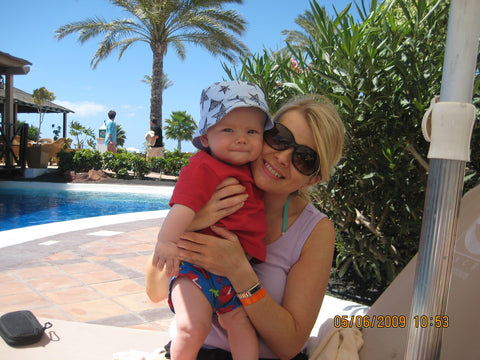
“Our family fondly refers to George as ‘Gorgeous George’ as he’s caring beyond his years and gorgeous inside and out.”
George is passionate about Arsenal FC and loves going to watch matches with his dad, as well as gaming and Lego. He also loves spending time with family, including his aunt, uncle and cousins.
My husband Matt and I felt so blessed to have a healthy, happy, close-knit family who enjoyed walking our dog and having fun together, as well as lovely holidays – at least until the onset of the coronavirus pandemic in 2020.
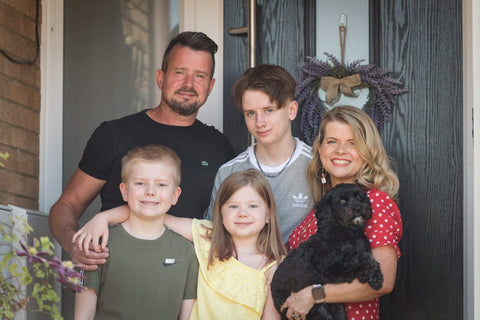
Everything changed in early April 2021. George started struggling with bad headaches, which he hadn’t experienced before. We took him to the GP who put it down to migraine and we also had him checked out at the optician. Six days on, George started vomiting too, which rang alarm bells as we were aware that this could be a symptom of a brain tumour. We took George to A&E at Luton and Dunstable Hospital and expressed our concerns. They tried to reassure us that his headaches and vomiting were down to migraine, but agreed to refer him for a scheduled routine MRI scan.
With his symptoms persisting we took George back to the GP and even rang for an ambulance on one occasion, which didn’t turn up.
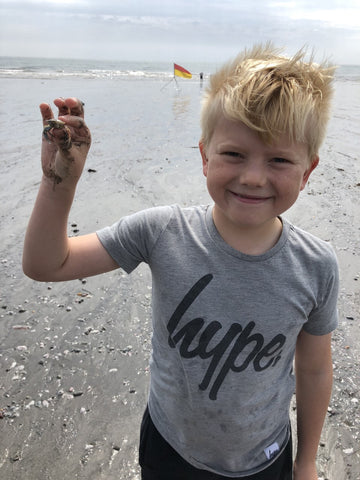
On 26 April 2021, we took George to A&E again and pleaded with them to check him for a brain tumour, but although they at first led us to believe they were going to scan him, this didn’t happen and they were satisfied he could wait until 29 April – the date of the scheduled MRI scan.
On the day of his MRI, the technician conducting George’s scan came to ask me if I would consent to him having a scan with contrasting dye. I realised straight away this wasn’t good news.
Shortly afterwards, a consultant asked me to accompany him for a chat. He allowed me to call my husband to join me inside the hospital as he hadn’t been allowed in due to COVID restrictions. When we got downstairs, there was a huddle of doctors and nurses and they ushered us into a side room. They told us that the scan had revealed a substantial brain tumour – exactly as we had suspected all along. It was 5cm across and in a very difficult location. They also said it looked like cancer and that George needed to go to Addenbrooke’s that night by ambulance.
“Our world literally fell apart. It was totally devastating and upsetting that George had been forced to suffer so badly for around three weeks because doctors wouldn’t listen to our concerns, even if it wouldn’t have changed the outcome. We went into a very dark place that we wouldn’t wish on any parents.”
Matt went home to pack a bag, but then we got told he wouldn’t be able to join us at Addenbrooke’s and that George and I had to go on our own because of COVID rules. It made it even more scary not having Matt with us.
George arrived at Addenbrooke’s and was put on steroids to reduce the build-up of pressure within his skull.
Amazingly, we quickly felt we were in really safe hands under the neuro team at Addenbrooke’s. George seemed to have a fantastic neurosurgery team who spent a lot of time and care putting together a plan for how they were going to operate, taking into account the position of the tumour. Brain surgery requires inestimable precision because of the very real risk of life-changing consequences or worse.
“We had utmost trust in George’s surgeon Tom Santarius. He explained the terrifying risks, but we knew we had no choice if we wanted to save our boy and find out exactly the type of tumour we were dealing with.”
George’s craniotomy went ahead on 6 May. The 10 hours he spent in the operating theatre were horrendous, seeming to stretch on into eternity. Fortunately, Matt was allowed to join me at the hospital while George was in surgery and we walked around the outside of the building in a circle for around five hours in a complete daze. Initially we had been told the surgery would take around six hours, so the last four hours were agonising.
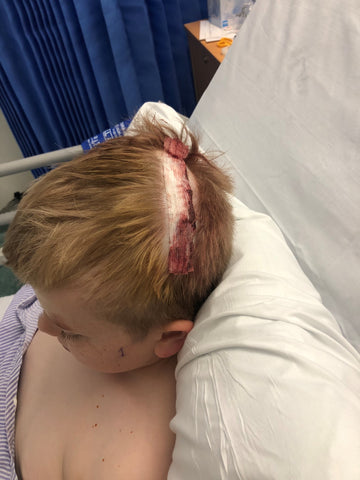
“Finally, Tom was telling us that everything had gone ahead as planned, in fact even better, because instead of realising their aim of removing 80% of the tumour, the surgeons had actually succeeded in removing 99%! We were totally elated.”
On top of this, George hadn’t suffered any adverse effects from surgeons probing around within millimetres of healthy tissue which could have left him paralysed for life or worse. As soon as we saw George in recovery, he started making us laugh. He recovered in leaps and bounds. By the following morning George was out of bed and taking small steps. We felt uplifted, positive and grateful; full of hope for the future. However, we still had no idea as to what type of tumour we were facing.
True to his caring nature, George was more concerned about his mum and dad getting enough sleep than himself, suggesting to nurses while he was in Intensive Care that Dad should be sent home to get some rest!
Incredibly, George was allowed home after a few days as he was making such an amazing recovery.
On 19 May, we met with the oncologist for the histology results and were given the earth-shattering news that George had an aggressive glioblastoma multiforme (GBM). This type of brain tumour is the most common, primary high-grade form in adults, but it is rare in children and there is no cure.
We were told that radiotherapy would help to hold it at bay, but to go and enjoy our time with George.
“I will never ever be able to describe the dark place that my husband and I were in that day; broken does not even come close.”
We quickly learnt that treatments for GBM on the NHS have barely changed in decades and it is ‘a one size fits all’ approach. We realised that to give George the best chance we needed to look abroad to Germany and the United States for pioneering treatment. However, this kind of treatment along with the expense of travel and accommodation for weeks or months on top comes at a huge cost involving hundreds of thousands of pounds.
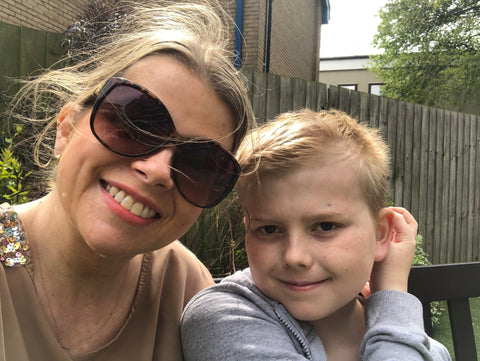
Added to the enormous expense, Matt, a builder, and I, a training manager for Avon, have stopped working to spend precious time with George, so we decided to launch a crowd-funding appeal and were quickly blown away by the generosity of friends, family and complete strangers and the outpourings of love and kind messages.
George underwent his NHS standard treatment of chemotherapy and six weeks of radiotherapy starting on 8 June 2021. It certainly took its toll on George and left him feeling very tired, but he never moaned once. The week he finished, however, he suffered two seizures which was terrifying and meant that he and I spent five nights in hospital. George was put on anti-seizure medication.
Meanwhile our hugely supportive friends and family were organising all kinds of fundraising events to help us access alternative treatment for George.
In August 2021 we had a lovely family holiday in Suffolk, making memories.
Five weeks after the end of treatment, George had another MRI scan and we got the fantastic news that the radio and chemotherapy had done their job and shrunk the tumour which had regrown following George’s brain surgery in May.
“I can’t tell you how overjoyed we all were to get some positive news for once.”
In September George returned to school in Year 8, part-time as he was still so tired from the treatment. We prayed that this period of ‘normal’ family time would last for as long as possible for George and for all of us.
Later that month, we had a weekend on a Disney Cruise making memories which was really lovely – we all love the Disney experience!
The following month, we took George to Germany for immunotherapy vaccines, after raising lots more funds with a charity Gold & Black Ball, organised by our fabulous fundraising team of friends.
“George was incredibly brave. He had to have 16 painful vaccines over four days – and he’s scared of needles.”
We hoped that in three months he would start having an immune response.
His next MRI scan was imminent and the fear was building already. We were praying that the radiotherapy from the summer was still working and buying us more time to continue to fundraise and give George the opportunity of a clinical trial in Germany or the US.
Unfortunately, the results weren’t quite what we were hoping for. We didn’t feel too negative as we knew it could have been a lot worse, but the medics found a couple of areas that they were concerned about in the cavity wall. We were told there would be another scan in six weeks’ time.
On 15 November, it was George’s 13th birthday and he was so excited because the last year had been horrendous and we had promised to make his birthday extra special. We went out to lunch during the day and then in the evening went to see the new Eternals Marvel movie with a group of George’s friends. Sadly, when we arrived at the cinema, George was getting his words confused and said he felt like he was having a stroke. He was really scared.
We took George to the nearest A&E department where he started having seizures and became unconscious. It was the scariest thing we’ve ever seen and absolutely heart-breaking. A CT scan confirmed there was tumour progression and swelling so we were transferred quickly to Great Ormond Street Hospital (GOSH).
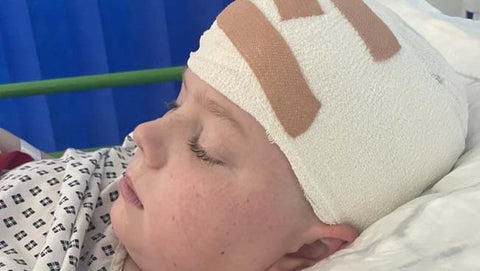
George spent three days in intensive care, sedated and on ventilators. On the fifth day he had emergency surgery to remove as much of the tumour as possible – George’s second brain surgery in seven months.
As George was unfit to travel, he sadly missed going to Germany for the second phase of his immunotherapy vaccines.
While George began two much stronger chemotherapy drugs, we began looking into the CAR-T cell trial being run out of the City of Hope Hospital in Los Angeles.
In mid-December 2021, George started getting more headaches, resulting in us going to the local hospital every day until eventually they agreed to do an MRI.
“Devastatingly, we learned that George’s tumour had grown back since his surgery on 19 November. Broken didn’t come close.”
George went back on steroids to reduce the pressure and swelling in his head.
As 2021 ended, we were glad to see the back of it, but also equally terrified about what 2022 would bring. We were praying for good health and a miracle.
In January 2022, George ended up in hospital for a couple of nights as he started having partial seizures. As he was admitted to hospital, we discovered that he was COVID-positive, which as we know for most is not a problem, but when your immune system is low and you are on steroids, it’s not as plain sailing. We prayed hard that it was the COVID causing the seizures, but an MRI revealed the tumour had progressed again. It felt like a massive blow; like the wind had been taken out of you.
The growing tumour was also causing pressure to build up and causing George to have excruciating headaches – some days so awful he couldn’t even get out of bed.
On the positive side, we heard that George’s tumour sample had been tested and was a match for the CAR-T cell clinical trial in LA. Only four children have been on this trial so far, with mixed results, but a chance is a chance – and we are determined to fight for any chance.
On 21 January we flew out to the States, having hired a paramedic to travel with us. Devastatingly, George’s condition rapidly declined and shortly after arriving in LA he was rushed to hospital and into intensive care. He had extensive swelling on his brain creating a 12mm midline shift which meant he was in excruciating pain. Surgeons fitted a shunt to relieve the pressure in his brain. Three days later he had a further six-hour operation to debulk the tumour to allow him to be stable enough to fly home.
Having flown thousands of miles for treatment, George had been deemed too ill to start the clinical trial. Meanwhile the medical care bills were mounting with the cost of a bed in ICU being nearly £16,000 per night, and a bill from one hospital alone, not including doctors’, surgeons’ or anaesthetists’ fees, totalling $510,000.
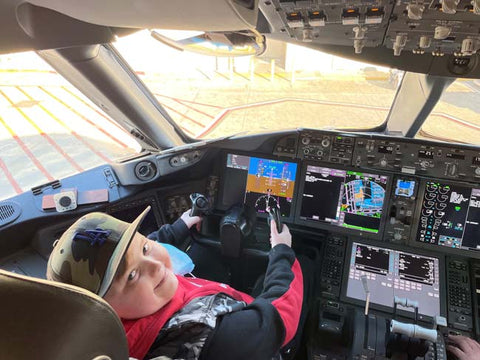
We arrived back home on 5 February and a couple of days later had an appointment with George’s consultant at GOSH. They started George on an inhibitor drug which we hope will target what they think is driving the tumour. We are also investigating whether George can have more radiotherapy, but this would need to be paid for privately and sadly there are very few centres in the UK that offer proton beam therapy privately for children in the UK so we may need to go to Germany.
We are not ruling out going back to LA for CAR-T cell therapy but only once we can get George into a more stable position. We continue to pray that there are still future options.
“It’s been nine months of hell, but there have been some beautiful moments too – beautiful because every special moment becomes even more precious once you have this horrific prognosis hanging over one of your children.”
Beautiful also because of the support we are receiving from the community and the army that we have behind our family – over 13,000 people have donated to our crowdfunding so far! It’s something so special we can’t even put it into words.
We are also so grateful to Brain Tumour Research for helping us raise awareness and for striving to find more effective treatments and ultimately a cure so families don’t have to look abroad for help, like ours.
Louise Fox
February 2022
Brain tumours are indiscriminate; they can affect anyone at any age. What’s more, they kill more children and adults under the age of 40 than any other cancer... yet just 1% of the national spend on cancer research has been allocated to this devastating disease.
Brain Tumour Research is determined to change this.
If you have been inspired by George’s story, you may like to make a donation via www.braintumourresearch.org/donate or leave a gift in your will via www.braintumourresearch.org/legacy
Together we will find a cure.

